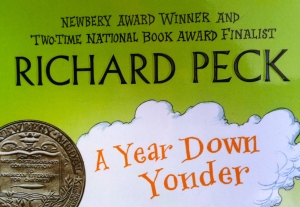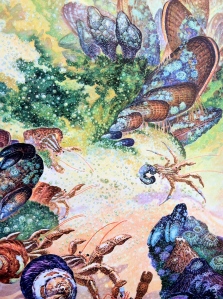Lemony Snicket’s The Bad Beginning (A Series of Unfortunate Events, Book #1) begins, famously, “If you are interested in happy endings, you would be better off reading some other book.”
Yesterday I was trying to fix one of my own really bad beginnings — which, needless to say, was nothing like Snicket’s. What I had was terrible and I didn’t know what to do with it. Because I have been working at home all week, in the comfort of an armchair (think: nasty post-SCBWI head cold), I took the path of least resistance and began an on-line quest for thoughts, prompts, strategies — anything to jog me out of my rut.
I used search terms like “picture book first line”, “picture book first sentence” and “children’s book opening line.” Thankfully, the blogosphere provided. A round-up of links that I found helpful follows.
A good starting place is this really nice conversation with editors and writers on the subject of opening lines in picture books and beyond: check out Susan Taylor Brown’s piece, “First Lines In Fiction“, originally published in Children’s Writer but also up on her blog.
Several posts categorize different types of opening lines and talk about goals for openers: “6 Ways to Hook Your Readers from the Very First Line” on writesideways, “3 Ways to Hook Your Reader with your Very First Line” on writersrumpus, and “Great Beginnings” at robsanderswrites. “Great Beginnings” offers a matrix of types of first line to try, and the ideas in the other two posts can easily be applied to the same sort of exercise.
Another big bunch of posts compile first lines, in case readers have exhausted the books on their own shelves. Not all of the openers provided are great ones — judge for yourself — but sometimes we learn as much from bad examples as we do from good ones anyway. And in any case it is nice to have a batch gathered in one place for easy comparison and study:
“100 Best Opening Lines from Children’s Books” (from Stylist.uk.co)
“16 of the Best Opening Lines from Children’s Books” (from someone at HarperCollins, via buzzfeed)
“Great Opening Lines to Hook Young Readers” (from Nancy Pearl, on NPR)
“First Lines – Picture Books” (from author Quinn Cole’s picbooksrock, on Pinterest)
“You Had Me At Hello: Children’s Books with Fabulous Opening Lines” (from librarian Mary Evelyn’s blog, whatdoyoudodear)
Lastly, I came across notes from some SCBWI sessions with the inimitable Richard Peck: a description by Susan Berger on thepenandinkblog and a post on SCBWI’s Summer 2013 conference blog. Peck apparently calls himself “a collector of opening lines”, and some of his favorites are included in each post.
I’ll resist the urge to digress and babble feverishly about Peck and his A Year Down Yonder. Suffice it to say that the book features one of the saltiest, greatest grandmothers ever — Grandma Dowdel — a woman who’s acquaintance it is worth making.
As for A Year Down Yonder‘s first line: the prologue’s isn’t particularly noteworthy, but the first chapter begins: “Oh, didn’t I feel sorry for myself when the Wabash Railroad’s Blue Bird train steamed into Grandma’s town.” — which is a perfect teaser for what (and who’s) to come.






